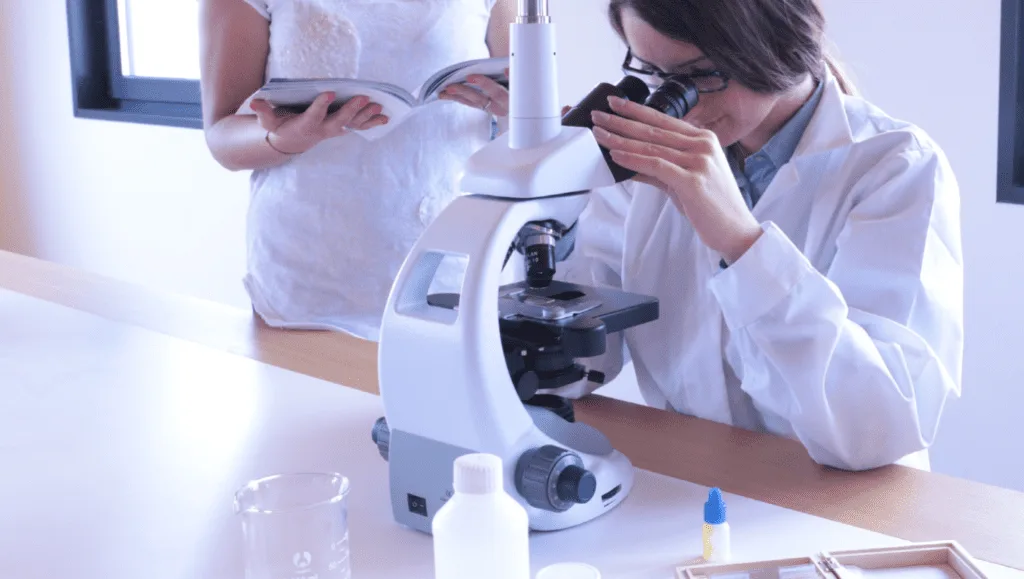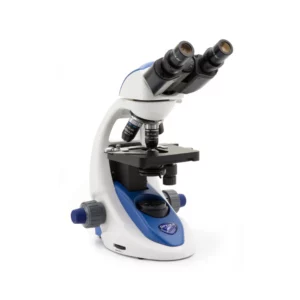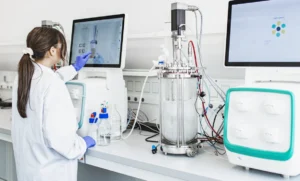Microscopes are indispensable tools in scientific research, education, and industrial applications. Whether you’re working in a clinical laboratory, a university, or an industrial setting in South Africa, selecting the right microscope is crucial for achieving accurate, reliable results. In this article, we’ll guide you through the different types of microscopes, key specifications, and essential factors to consider when purchasing laboratory equipment.
1. Understanding the Different Types of Microscopes
Microscopes come in various designs, functionality, and intended uses. Here’s a breakdown of the primary types:
1.1. Compound Light Microscopes
- Commonly used in biological and clinical laboratories.
- Utilize multiple objective lenses to magnify specimens.
- Ideal for observing thin, stained samples such as cells, bacteria, and tissue sections.
- Variants include brightfield, darkfield, and phase contrast microscopes.
1.2. Stereo Microscopes (Dissecting Microscopes)
- Provide a 3D view of large, opaque specimens.
- Used in dissection, circuit board inspection, and forensic science.
- Offer lower magnification (typically up to 100x) but greater depth of field.
1.3. Inverted Microscopes
- Designed for viewing samples from below, with objectives placed beneath the stage.
- Essential for live-cell imaging, cell culture research, and microbiology.
- Available in brightfield, phase contrast, and fluorescence configurations.
1.4. Fluorescence Microscopes
- Use high-intensity light to excite fluorophores in biological samples.
- Used in applications such as immunofluorescence, molecular biology, and microbiology.
- Enable the visualization of specific proteins, nucleic acids, or pathogens.
1.5. Phase Contrast Microscopes
- Enhance contrast in transparent specimens without staining.
- Ideal for live-cell observation, bacteria, and thin tissue samples.
- Commonly used in microbiology, cell biology, and medical diagnostics.
1.6. Polarizing Microscopes
- Used to analyze birefringent materials, including minerals, polymers, and crystals.
- Essential in geology, materials science, and pharmaceuticals.
1.7. Digital Microscopes
- Equipped with built-in cameras for image capture and analysis.
- Provide real-time digital viewing on a monitor.
- Ideal for documentation, education, and industrial inspection.
2. Key Specifications to Consider When Choosing a Microscope
2.1. Magnification and Resolution
- Total magnification = Eyepiece magnification × Objective lens magnification.
- High-resolution lenses improve image clarity, crucial for detailed observations.
2.2. Illumination Options
- LED: Long lifespan, energy-efficient, and produces less heat.
- Halogen: Brighter but generates more heat.
- Fluorescence Excitation Lamps: Specialized for fluorescence microscopy.
2.3. Objective Lenses and Optical Quality
- Plan-achromatic, semi-apochromatic, and apochromatic lenses offer different levels of color correction and image sharpness.
- Oil immersion objectives provide high magnification (100x) for microbiology.
2.4. Ergonomics and User Comfort
- Adjustable eyepieces, focus controls, and stage movements enhance usability.
- Essential for prolonged use in research and diagnostics.
2.5. Camera and Imaging Capabilities
- Digital microscopes or add-on cameras enable image capture, analysis, and sharing.
- Important for documentation, research publications, and quality control.
2.6. Stage and Sample Handling
- Mechanical stages allow smooth and precise movement of samples.
- Heating stages are used for live-cell imaging.
2.7. Compatibility with Accessories and Software
- Compatibility with fluorescence filters, phase contrast kits, and imaging software can enhance functionality.
3. Applications of Microscopes in Various Industries
Microscopes are widely used in diverse fields. Here are some examples:
- Medical and Clinical Laboratories: Used for pathology, hematology, microbiology, and cytology.
- Life Sciences Research: Essential for studying cells, bacteria, and molecular interactions.
- Pharmaceutical Industry: Applied in drug development and quality control.
- Forensic Science: Helps analyze evidence like fibers, hair, and biological samples.
- Material Science and Engineering: Used to inspect metals, polymers, and nanomaterials.
- Education and Training: Digital and compound microscopes play a key role in teaching biology and material science.
4. Choosing the Right Microscope for Your Needs
When selecting a microscope, consider the following:
- Purpose and Application: Determine whether you need it for biological, industrial, or educational use.
- Budget and Cost: Advanced microscopes with imaging systems may be more expensive but provide better functionality.
- Expandability: Consider whether future upgrades (cameras, objectives, or illumination options) are needed.
- Ease of Maintenance: High-quality optics and durable construction ensure longevity.
If you’re unsure which microscope suits your needs, Apex Scientific is here to assist you with expert advice and tailored recommendations.
Explore Our Range of Microscopes
At Apex Scientific, we supply a wide range of Optika Microscopes designed for diverse laboratory and industrial applications in South Africa. Whether you’re looking for a compound light microscope or a digital microscope, we have options that meet your specifications. Explore our selection of upright microscopes, stereo microscopes, inverted microscopes, or cameras and digital solutions for microscopy here.
For more information or personalized guidance, don’t hesitate to get in touch with our team today!
Recommended products
Upright Microscopes – B-190 Series
Upright Microscopes – B-290 Series
Upright Microscopes – B-380 Series
Upright Microscopes – B-510 Series
Research Microscopes – B-810 and B-1000 Series
Fluorescent Light Microscope – FLUO Series
Polarized Light Microscope – POL Series
Stereo Microscope – MS/SFX Series
Stereo Microscope – SLX Series












